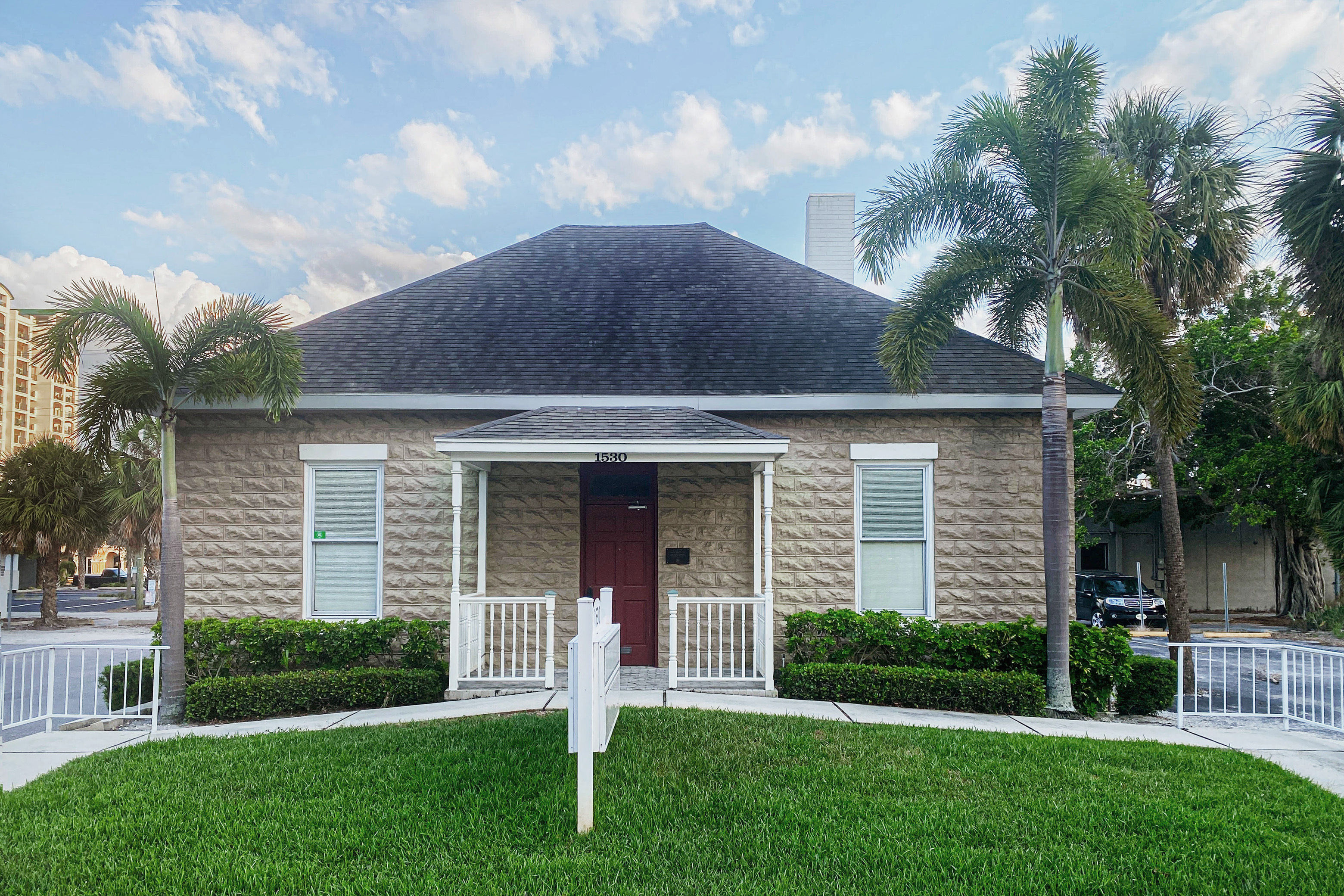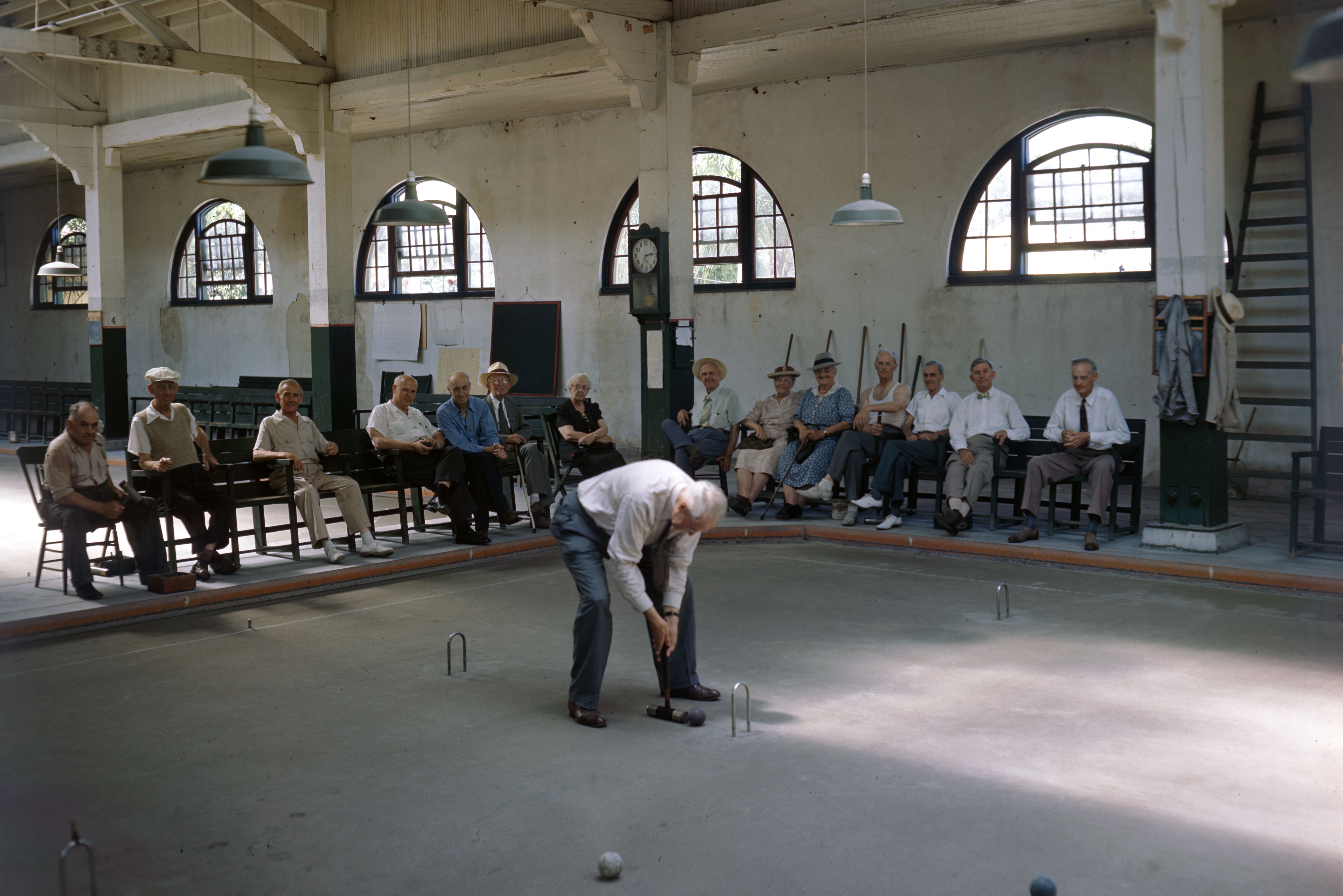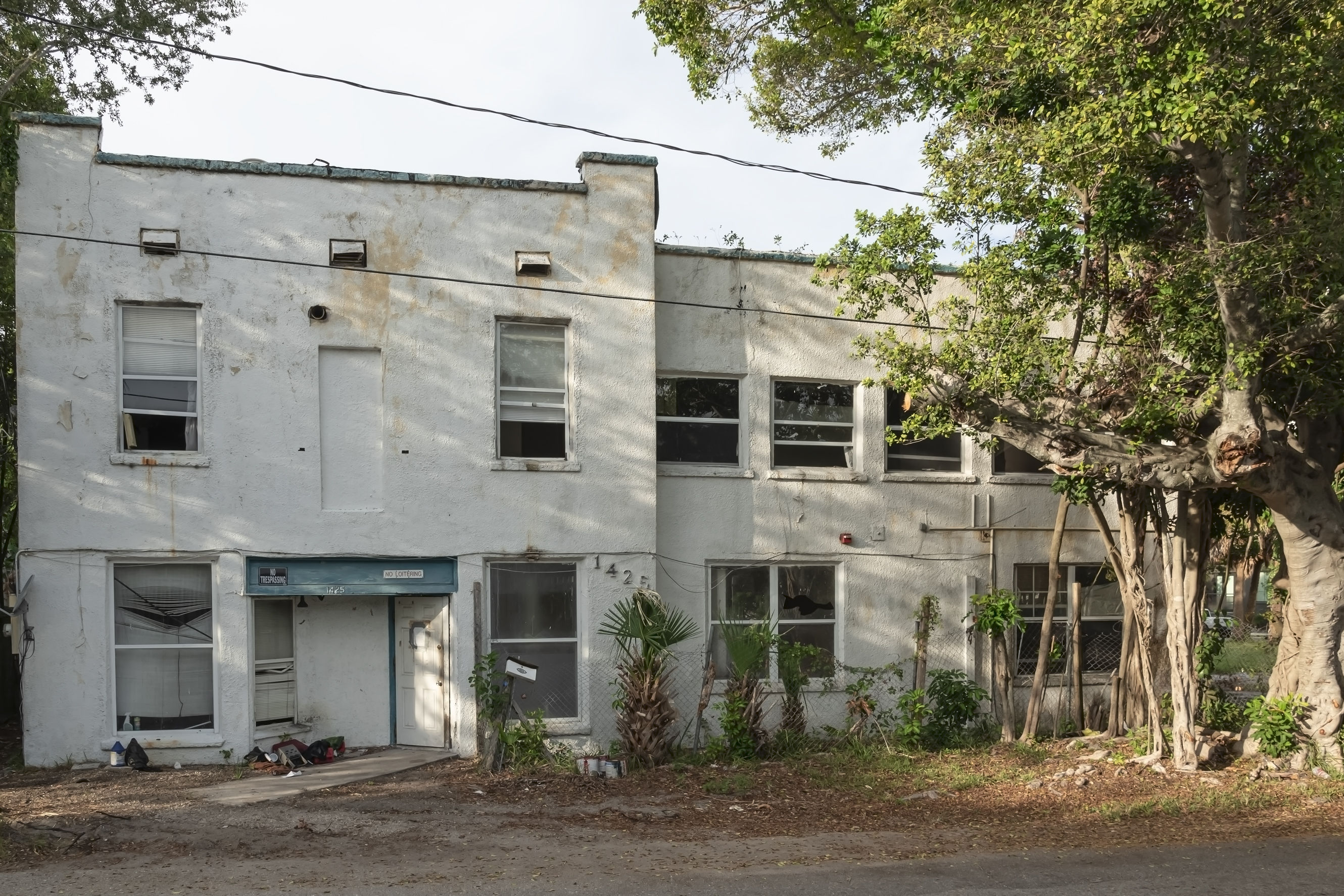Sarasota Alliance for Historic Preservation Names Its 2023 'Six to Save'

The Venice Hotel in south Sarasota County.
Image: Brian Jones
Concerns over development are top of mind for many Sarasota County residents, just like they are for the Sarasota Alliance for Historic Preservation (SAHP), which seeks to save local buildings that tell a story. Yesterday, SAHP leaders and community preservationists gathered at the historic Phillippi Crest Club to learn more about this year’s Six to Save, a SAHP program that highlights local historic buildings that may be under threat.
“With all the new developers and real estate investors breaking ground here, many have no knowledge of or investment in what these buildings mean, so they get scrapped,” says SAHP program director Erin DiFazio. “The land underneath is just too valuable.” Indeed, a post-pandemic land boom has seen the area's rents and home values spike amid increased demand.
The Six to Save initiative, which kicked off in 2020, is a collaboration between SAHP and the History and Preservation Coalition of Sarasota County to educate and advocate for unprotected historic sites. This year marks its fourth year—and the first time it's had a dedicated, standalone event.
Unlike historic gems like architect Paul Rudolph's iconic Umbrella House on Lido Shores, which is listed on the National Register of Historic Places, the Six to Save buildings have no such protections. Most of this year’s nominees need repairs and restoration, and some are slated for demolition, adding even more barriers to preservation.
Modeled after the Florida Trust for Historic Preservation’s 11 to Save program, the aim of the citizen-powered Six to Save is to draw attention to the treasure trove of local historic properties and motivate citizens and owners to help save them.
Let’s take a look at this year’s list.
The Pei Dormitories at New College of Florida

The I.M. Pei dormitories at New College of Florida, 5641 General Dougher Place.
Image: Brian Jones
The dorms, built in 1965, are the only I.M. Pei design in the state and a rare Florida example of the Brutalist style of the era.
An internationally renowned architect, Pei—also known for buildings like the Pyramide du Louvre at the Louvre Museum in Paris and the John F. Kennedy Library in Boston—designed the dorms as three courts, each centered around a landscaped Palm Court. In contrast to the light and airy designs of the Sarasota School of Architecture at the time, Pei’s work featured a heavy concrete frame with interior fountains and ponds that were later converted into gardens. The courts have balconies with sliding doors to bring in light and air. Renovated in 2014, they still suffer from deferred maintenance and New College has deemed them unusable.
But Architecture Sarasota has partnered with New College to launch the Reimagining Pei Challenge, which invites architects to transform the dorms by giving them new uses and incorporating them into an athletic and recreational complex to include retail and restaurants. Three finalists were announced on Wednesday, and a winner will be announced early next week. Morris "Marty" Hylton III, president of Architecture Sarasota, shared the good news at yesterday’s SAHP meeting and said, “I have assurance from Richard Corcoran [the college’s president] that demolition is not on the table.”
The Waldman Building

The Waldman building at 533-539 S. Washington Blvd. in downtown Sarasota.
Image: Brian Jones
In 1957, renowned Sarasota School of Architecture great Victor Lundy designed a two-story commercial building for Harry and Esther Waldman on Washington Boulevard in downtown Sarasota. The building included retail space, offices, and a large dance studio and ballroom, but has seen various tenants over the years. A signature Lundy sculptural building, the two-story main elevation is broken into three bays with floor-to-ceiling glass that wraps around half of the side elevations. Two second-floor bays protrude outward from the first floor, creating a shady overhang below, and the rear walls are stacked Ocala block. Now vacant, the building has suffered from long-term deferred maintenance. It's in a prime location in downtown Sarasota and sits on just less than two acres of land, recently purchased by Fort Lauderdale-based real estate development firm PTM Partners in a $7.5 million deal. A demolition permit has already been issued and a mixed-use retail and townhome project is slated for the land.
The Colson Hotel

The Colson Hotel is located at 1425 8th St., in the Rosemary District just north of downtown Sarasota.
Image: Brian Jones
During the early and mid-20th century, Jim Crow laws made it illegal for African Americans to stay at white hotels and in 1926, Owen Burns built the Colson Hotel in the Overtown neighborhood (now the Rosemary District) in the Mediterranean Revival style. The building had 26 guest rooms and a lobby with a fireplace. It has become an important landmark of local African-American history and is a contributing resource to the Overtown National Register Historic District.
Over time, the Colson Hotel was converted to an apartment building, and in recent years, the building has suffered from deferred maintenance and neglect. This year, the building was purchased by JDMAX Development with the intent to demolish it. The developer has since received feedback from the community about its significance and is considering incorporating the building into a future development for the site.
Some of Sarasota’s first Black settlers, the Colsons arrived here in 1894. Lewis was a surveyor with the Florida Mortgage and Investment Company and helped map out the town of Sarasota. He was formerly enslaved, a fisherman, landowner and reverend. He and his wife Irene, a midwife, settled in the neighborhood just north of downtown Sarasota, which has since been heavily gentrified; land values have skyrocketed among redevelopment.
Hotel Venice

Hotel Venice at 200 N. Nassau St. in south Sarasota.
Image: Brian Jones
Built in 1926 for the Brotherhood of Locomotive Engineers (BLE), Hotel Venice was designed by New York architects Walker & Gillette and built by the George Fuller Construction Company. It was the first building built in Venice by the BLE. Made using many locally produced materials, the Italian Renaissance-style structure was built of wood-frame and masonry, coated in stucco, and has exposed cypress beams throughout. For 60 years, the building served as dorms and cafeteria for the Kentucky Military Institute.
The three-story, 92-room hotel was listed in the National Register of Historic Places in 1984, which helped save it from demolition—unlike its sister building: the Park View Hotel. Since then, the building has served as an assisted living facility under a long-running list of owners. However, high turnover, neglect and damage from Hurricane Ian have sped up potential demolition. Community members, however, would like to see the building restored and possibly returned to its original use as a hotel.
The McAlpin House

The McAlpin house is located at 1530 Cross Street in the City of Sarasota.
Image: Brian Jones
The McAlpin House was built in 1912 by George McAlpin, who used a unique hollow, rusticated pre-cast block. McAlpin lived there while he ran a concrete and construction business with his partner Owen Burns, and his work is responsible for much of the City of Sarasota’s sidewalks and curbs. One of the last remaining local examples of this type of block construction, and a reminder of the important role McAlpin himself played in the original development of the city, the home was added to the City of Sarasota’s Local Register of Historic Places in 1984. In early 2023, the parcel was part of a larger land purchase by developer Orange Pineapple LLC, with the intent to build a 10-story mixed-use residential and retail project. The demolition application was unanimously denied by the City’s Historic Preservation Board. The city commission heard the developer’s appeal and requested a continuance for six months to allow the developer to determine whether the building could be moved or incorporated into the larger project. The commission will hear the case again in March 2024.
45 N. Tamiami Trail

This home is roughly 100 years old and serves as an early example of an original Florida vernacular home.
Image: Courtesy Photo
This home is a two-story classic wooden vernacular, built circa 1925. It’s clad in wood novelty siding with a gable roof and retains some of its original sash windows. A prominent part of Osprey's early development, the SAHP says it's possible that the home was built to fulfill both residential and commercial needs. From the early 1980s, it was home to the Tunningly Glass Studiom but has changed hands several times since, and earlier occupants have been difficult to identify. One of the few historic touchpoints along Tamiami Trail, nominators worry that deferred maintenance and storm damage could lead to potential demolition.
Check out last year’s Six to Save here. Visit the SAHP site to nominate a threatened historic building or stay up to date on events and programs.



